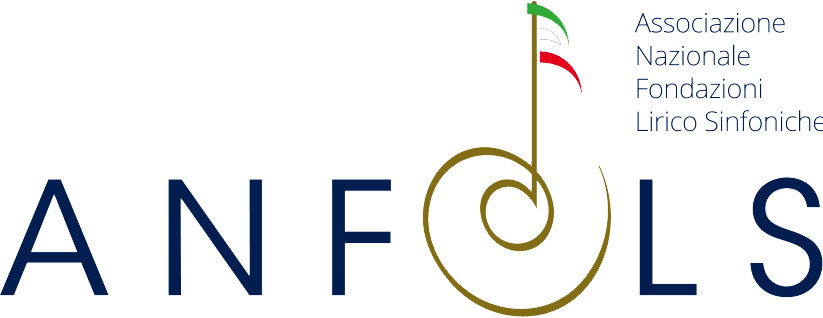by Patricia MacCormack
The following article is taken by Calibano #4 – Peter Grimes/L’outsider
All existence is relational, microcosmically and macrocosmically. Self is an alchemy of the multiples within us and where our individuality is a minute speck within the myriad lives, species, organisms and worlds which constitute the assemblages teeming on Earth and the cosmos. Anthropology, sociology, psychoanalysis all speak to the inevitability of living within groups. Being within a group also involves existing within a system, a system into which one is born like a language. Not learned, this system layers itself upon other systems until the self exists within a palimpsest of systematic signifying structures – first the (Oedipal) family, then the heterotopic institutes such as school, the moralizing institutes of religion and capitalism, the arbitrary ideologically agreed systems of society, the aggressive systems of nation and state. To be within, to belong, is a plane of consistency which cuts through these geologies of conformity so that the self is a mere trace, a mineral thread, a vein of forgotten imagination devolved into conformity as comfort or as the promise of ascension to power.
Unlike the aforementioned epistemes, art and activism decry these systems and extricate the self from those structures into which one is born. The outsider is not, contrary to popular opinion, the heroic individual. The heroic individual is the one who obeys the systems par excellence. The dream of capitalism, the phantasy of taking the rules of power to a hyperbolic extreme of narcissism and simulacrum. The outsider shows obedience neither to the system nor to the signifying regimes who allow them to emerge as identifiable and unrecognizable. Disobedience not to rules, nor even illicit transgressions, but to counting as a being at all. This kind of outsider forges strange relations, creates alternate microcosms and macrocosms, is queer to their own species and to the clans and families within which they are born. The outsider is a kind of wildling, a foundling of ecology, a cosmic entity. Neither good nor evil, neither free nor bound, the outsider has gone beyond the horizon of identifiable worlds.
H.P. Lovecraft’s story ‘The Outsider’ is a masque of trickery. For its entirety the Outsider laments his extrication from an exquisitely described shimmering effulgent world. It is only at the last line, when he looks in the mirror that we realise the monster we await is he himself. The world is normal, he, the protagonist, is not. Other protagonist monsters are called to our recollection. Britten’s Peter Grimes, Kleist’s Michael Kohlhaas. Even Janet Tyler, the patient in The Twilight Zone episode ‘Eye of the Beholder’. All evince that there are other worlds within this world, other value systems, other perceptions of reality. Where normalcy claims a single plane of accepted experience and existence, these outsider perceptions reveal the baroque nature of perception, made up of numerous folds, unfurling and recombining at every turn to alter reality continually, life in metamorphosis. The dominant signifying regimes invite a naturalization of their arbitrary and singular legislations to conceal their motives of conformity and control, and maintain the structure not as baroque but hierarchical. The outsider is not at the lowest point of the hierarchy. They weave in and out, they exist between the spaces between, in the interstitial vacuums of chaos and clandestine affects.
Why is it that these outsiders present so often as disturbed or put upon men? As those who could-have-been-heroes but were not because they refused to abide by the rules? These is an entirely other way to perceive the outsider – the way of art without catharsis. The question we must ask is – who wants to belong and to what do you wish to belong? Where is the desire within belonging? The outsider is the queerest wanderer, not because of who they are but because their desires have not yet been reified by subject positions to fulfil, or stratum of power to occupy. The weaving, wilding aimless wandering of the outsider is a body in movement, an identity in flux. Has not this always already been the way for the witch, the wild woman, the body who does not fit and therefore does not count? Those who create community of the uncommon, with plants, with trees, with animals. We who are monsters choose the monsters over the humans, because the monsters neither have rules nor demand we follow them. Mary Shelley’s Vernon in The Last Man laments the loss of the human species as he wanders the human-free Earth as if it were an apocalypse. Shelley’s Creature of Frankenstein enmeshes himself with the Earth, ecologies, animals, but also books, songs and art, creating a paradise. It is only when he seeks to count within society that his suffering begins. We can, as Deleuze and Guattari say, create ‘unnatural alliances’ with nature. The location of ethics for Spinoza is, after all, the communion between two unlike entities who merge nonetheless due to their unknowable common feeling, creating joyful affects between each other beyond the capacity of language or representation to convert into a community or society. Hybridity is where the outsider enters their becomings. There is no place and no attraction for the outsider within human society, neo-capitalism, the family, church or state. These are necropolises built to the death of art and desire. They are ziggurats for dead selves to climb, where capitalism and the apocalypse are one and the same.
Being an outsider at this time is critical for art and activism. And at this time both art and activism are becoming increasingly interchangeable. Established and legal practices of activism must work within a system that allows and authenticates it. Activism can neither flourish nor change such a system. Activism belongs to the outsider, to work inside the system incorporates activism until it is suffocated, leading to greenwashing, to sustainability, to equality and all the other rhetorics late capitalism use to turn activists into Lotus-Eaters. Activists have to think like artists to formulate tactics which employ imagination outside of recognizable systems of action and representation. We are the invisible, clandestine outsiders. Art that is in service to economic value is similarly no art at all. Art is what piques the never-before, the beyond signifying regimes, that cultivates the becoming-otherwise of the spectator, the reader, the listener. Both art and activism catalyse becoming-outsider. Instead of wanting to be incororpated and count within the system, what happens when we artistically become activists toward outsiderism? We can create co-operations without legislations, communions without commands, infinite and infinitesimal alterity within ourselves and between our bodies so that all is difference. Rhizomatically, waves of affect can produce changes and open spaces for new outsiders, until there is only Outside, no longer a division of within and without. The rhizome displaces the hierarchy, all is connectivity, nothing excludes nor includes, we become a trembling cosmic indeterminability of affects.
Who desires to be inside? Is the outsider willful or relegated? Is embracing one’s outside status, as a woman, as a queer, as a BIPoC person, as disabled, as a nonhuman animal, as all the many formations of body which are lesser than those atop the pyramid of the inside, a radical form of disruption? It is time we stopped desiring the limits and promises of equality given to us by the various regimes of signification, where we must describe our identities in minutiae in order to be delegated a place in the hierarchy, and told to work harder and strive further to climb on top of others, where power is the only thing to which desire is converted, and value is found in creating objects of lives, and subjects of flows of energy. Yes, being an outsider is difficult, but it is no more difficult than being catatonic at the bottom of the pyramid while being told one’s place there is one’s own fault – of body, of birth, of family. Far more joy to weave in and out of the world and its infinite organisms in a bacchic dance of artistic activism and imagination. Know thyself is to kill thyself, to be recognized within society but dead to the world. Live and thrive within a world teeming with life beyond the reach of language and representation, identity politics and enslavement to love of power. Be at one with, but never the same as, the monsters, the animals, the less-than-humans. Far more interesting worlds exist within this world. The Outsider is the pure potential of all desire and can show us that what we have been trained to want offers nothing but chains and toil for inclusion into an exhausted system. Feminists, queer activists, anti-colonialists, eco-warriors, animal-rights activists, disableists, let us all express our indescribable alterity, being the monsters the more usual Lovecraftian protagonists decry, with our seething, foaming, teeming, mucosal, deviant flesh dancing to alter patterns of power. The future is Outside.
Patricia MacCormack is Professor of Continental Philosophy. She is the author of Cinesexuality (Routledge 2008) and Posthuman Ethics (Routledge 2012) and the editor of The Animal Catalyst (Bloomsbury 2014), Deleuze and the Animal (EUP 2017), Deleuze and the Schizoanalysis of Cinema (Continuum 2008) and Ecosophical Aesthetics (Bloomsbury 2018). Her newest book is The Ahuman Manifesto: Activisms for the End of the Anthropocene. She recently completed a Leverhulme Fellow researching and developing Death Activism and completing the monograph Death Activism for Bloomsbury. She is also the author of numerus journal articles and anthology chapters.
Calibano is the new magazine of the Rome Opera House. Created as a space for in-depth analysis and debate around topical issues raised from the performances on the theater’s program and realized in collaboration with the publishing house effequ, the editorial project involves, every four months, the publication and distribution in Italian bookstores of a monographic volume dedicated to an opera title and a related theme, through the commissioning of essays, short stories and reviews by authoritative signatures.
You can buy Calibano on the effequ website at this link, in bookstores and at the Rome Opera House shop.
The illustrations in this issue were made by Elena Manferdini.
The cover is a collage by Giuliano Paolini (Photo Ⓒ Luca Vianello, Torino / Courtesy Fondazione Giulio e Anna Paolini, Torino / Ⓒ Giulio Paolini)













